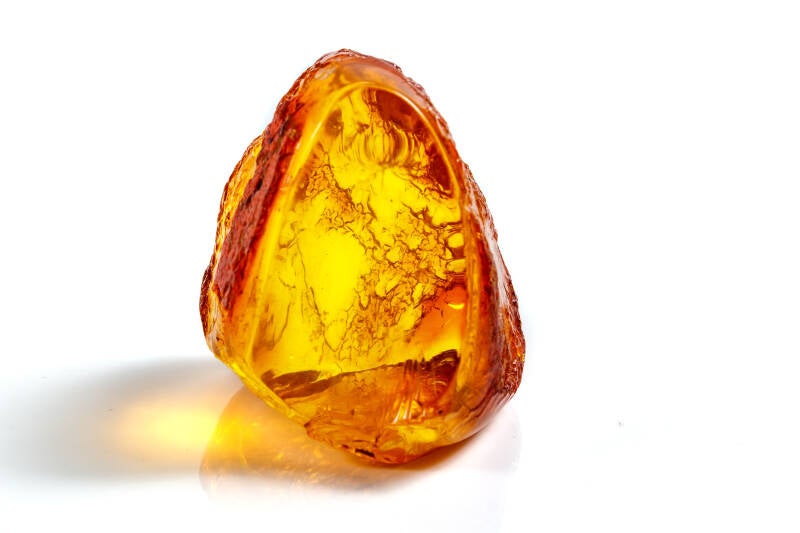
Amber, the golden gemstone with a history dating back millions of years, carries significant scientific and cultural importance. In this article, we will explore the scientific properties and cultural significance of amber.
The Scientific Significance of Amber:
- Formation: Amber is fossilised tree resin, created over millions of years as resin from ancient trees hardened and solidified. This process traps various organisms and plant material, offering a unique glimpse into prehistoric life.
- Inclusions: Amber often contains well-preserved insects, plants, and even small vertebrates. These inclusions serve as valuable snapshots of ancient ecosystems, aiding scientific research in palaeontology and ecology.
- Optical Properties: Amber is known for its warm, golden colour and its ability to refract and disperse light. This makes it an attractive material for jewellery and ornamental objects.
- Electrostatic Properties: When rubbed, amber develops an electrostatic charge and can attract lightweight particles. This phenomenon, known as static electricity, was studied by ancient Greek philosophers and has modern applications in science and technology.
- Aromatic Qualities: Amber has a distinctive fragrance when heated, often used in perfumes and incense.
Cultural Importance:
- Jewellery: Amber has been used in jewellery for thousands of years. Its warm, golden hues are captivating, and it is often used in necklaces, bracelets, and earrings. It is considered a symbol of elegance and luxury.
- Cultural Symbolism: In various cultures, amber has been associated with healing, protection, and good luck. It is believed to carry positive energy and has been used as a talisman to ward off negative forces.
- Historical and Mythological Significance: Amber has been revered in mythology and history. In ancient Greece, it was believed to be the tears of the Heliades, daughters of the sun. The "Amber Road" was a historic trade route for this precious gemstone.
- Traditional Medicine: Amber has been used in traditional medicine for its perceived healing properties. It is believed to alleviate pain, reduce stress, and have calming effects.
- Art and Craftsmanship: Amber is used in various art forms, from intricate carvings to ornate sculptures. The skill and craftsmanship involved in amber art is highly regarded.
Amber, with its rich history, unique optical properties, and cultural symbolism, holds a special place in the world of gemstones and cultural heritage. It connects us to prehistoric times and continues to captivate with its timeless beauty and scientific insights.


Add comment
Comments